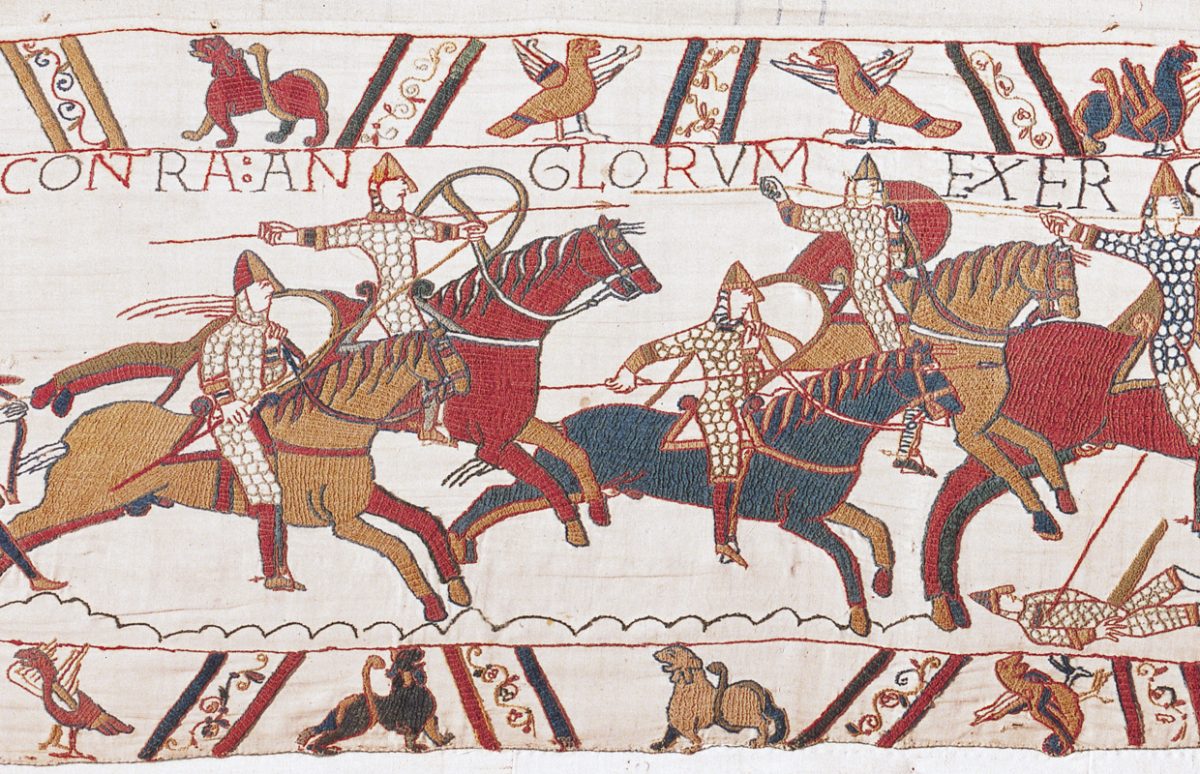The Battle of Hastings in 1066 was a major turning point in British history. The victory of William the Conqueror, Duke of Normandy, changed whole course of Britain's history and culture. Not least the language, as French became the legal language of England for the next 300 years. The 950th anniversary of the battle this October is being marked with lots of events.
1066 is known as the "Year of four kings". When the Anglo-Saxon King Edward the Confessor died in January, there were three claimants to the English throne. Harold Godwin of Wessex, Edward's brother-in-law, had effectively been running the country, and he was chosen by the Anglo-Saxon nobles and crowned king. But there were opposing claims from Harald Hardrada, King of Norway, and William, Duke of Normandy, a distant cousin of Edward's, who claimed Edward had promised him the throne. Harold managed to defeat Harald in battle at Stamford Bridge on 25 September, but died combatting William's invasion at Hastings on 14 October. William was crowned at Westminster Abbey on Christmas Day.
1066 is often one of the only dates in British history British people remember. The arrival of Norman nobles, architecture and language changed the country profoundly. There are still examples of Norman architecture all over Britain, starting with the Tower of London, and the (now ruined) abbey William had constructed at the site of the Battle of Hastings as penance for the deaths he had caused: Battle Abbey. There are also reminders of Normans every time an English speaker opens their mouth – over 10,000 words entered the English language from Norman French.
William is further remembered for initiating the Domesday Book: having conquered England and rewarded many Norman nobles with English lands, he wanted a record of who owned what, and therefore what tax they owed the crown. This precious record is in effect the first census of the country (although it concentrated more on land and belongings like livestock than humans), and a valuable source for historians and amateur genealogists alike.
From the Bayeux Tapestry to the Kids' Tapestry
Another reason the Battle of Hastings is remembered so clearly is that it was the subject of one of the world's comic strips: the Bayeux Tapestry. This was commissioned by William's brother, Odo, bishop of Bayeux in Normandy, to propagate the Norman version of the story. It has survived numerous wars and other catastrophic events and can still be viewed today.
To commemorate the 950th anniversary of the Battle of Hastings, as well as historic re-enactments, English Heritage commissioned a modern tapestry inspired by Bayeux, drawn by illustrator Liz Pichon. Its ten panels illustrate 10 important moments in British history, chosen by children. It starts with the Battle of Hastings and includes, the Great Plague, the birth of Shakespeare, Queen Victoria's coronation and Victory in Europe day in 1945. The final panel was drawn by 10-year-old Kate Arnold, who won a competition to illustrate the invention of the World Wide Web by Sir Tim Berners' Lee.
Tag(s) : "Bayeux tapestry" "British history" "comic strip" "England" "France" "Normans" "William the Conqueror"





